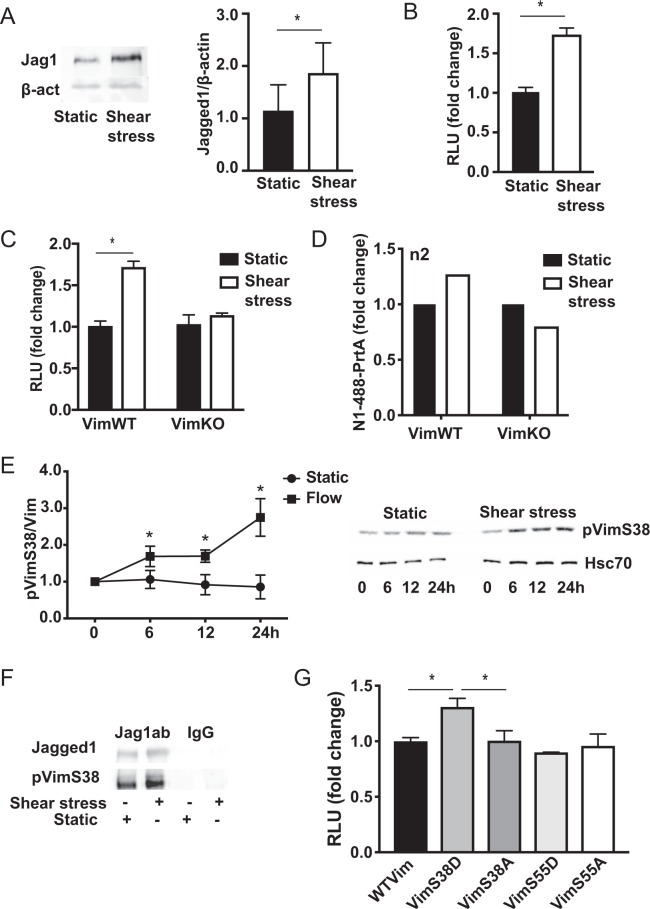Figure 4.
Shear stress induces vimentin phosphorylation and Jagged1 interaction and enhances Jagged1-Notch transactivation. (A) Jagged1 protein expression in ECs cultured under static conditions or under shear stress analysed by western blotting. The graph shows quantification of Jagged1 levels in three independent experiments. (B) Shear stress enhances the signal sending ability of ECs, as demonstrated by increased Notch activity in reporter cells co-cultured with ECs exposed to either static or shear stress conditions. (C) Shear stress enhances the signal sending ability of vimentin expressing cells (VimWT) but not vimentin depleted cells (VimKO). (D) Shear stress enhances N1ECD-Jagged1 endocytosis in VimWT but not in VimKO cells. Fluorescently labelled N1ECD was coupled to Protein A (PrtA) beads (N1-488-PrtA) in order to mimic the mechanical strain produced during receptor-ligand endocytosis and transactivation and N1-488-PrtA uptake was analysed by FACS. The graph shows data from 2 separate experiments. (E) Shear stress induces vimentin phosphorylation. Expression levels of vimentin phosphorylated at serine 38 in ECs exposed shear stress as analysed by western blotting using phosphospecific antibodies. (F) Jagged1 interacts with phosphorylated vimentin. Jagged1 was immunoprecipitated from ECs cells under static and shear stress conditions and the interaction with phosphorylated vimentin was assessed by immunoblotting of the precipitate by phosphospecific antibodies. (G) Vimentin phosphorylation at serine 38 enhances Notch activation potential. Jagged1 expressing and vimentin depleted cells were transfected with wildtype vimentin (WTVim), phosphomimicking forms of vimentin (Vim38D or Vim55D) or phospho-dead forms of vimentin (Vim38A or Vim55A). The Notch activation potential of the cells was measured by coculturing the cells with Notch reporter cells. The graph shows data from four separate experiments.

